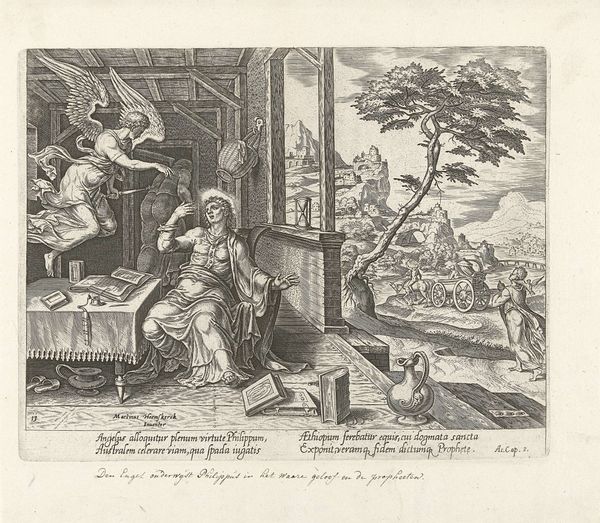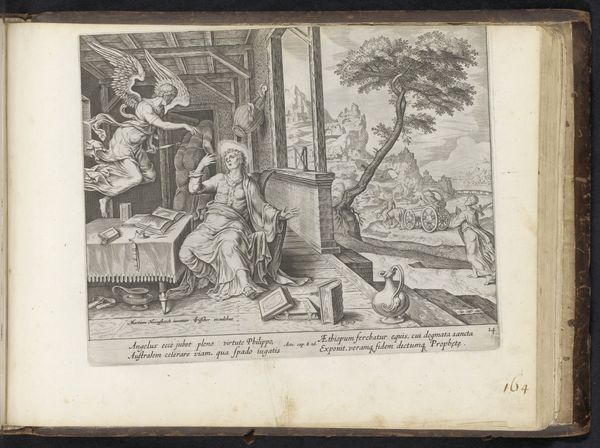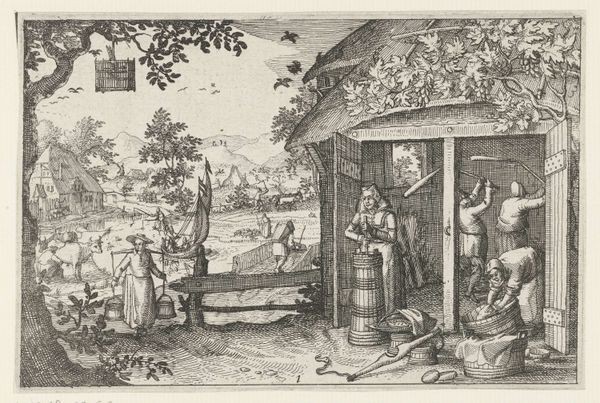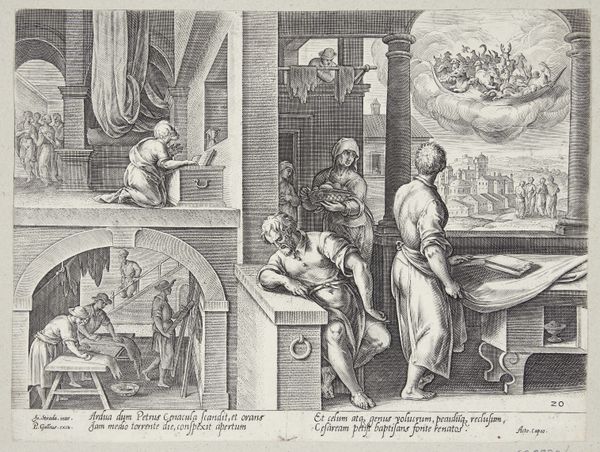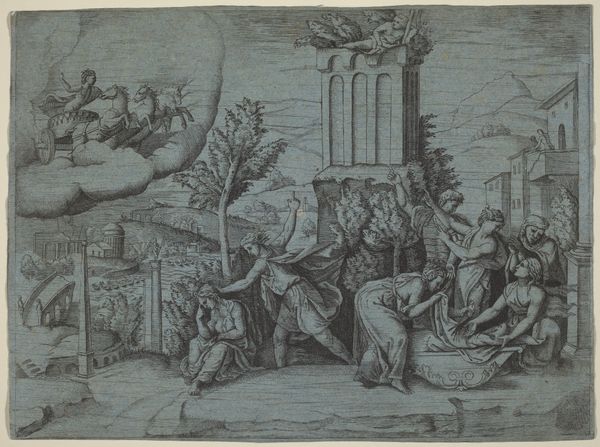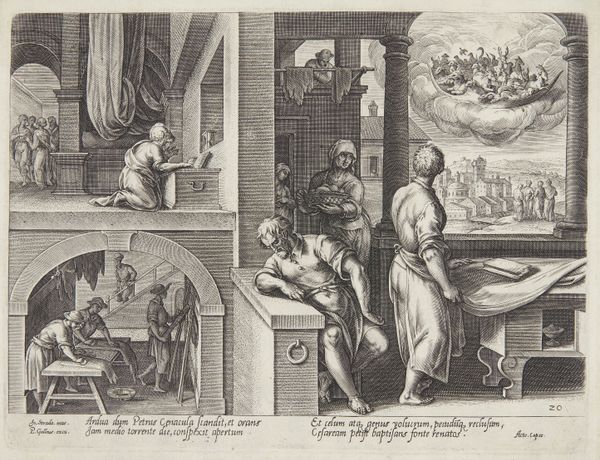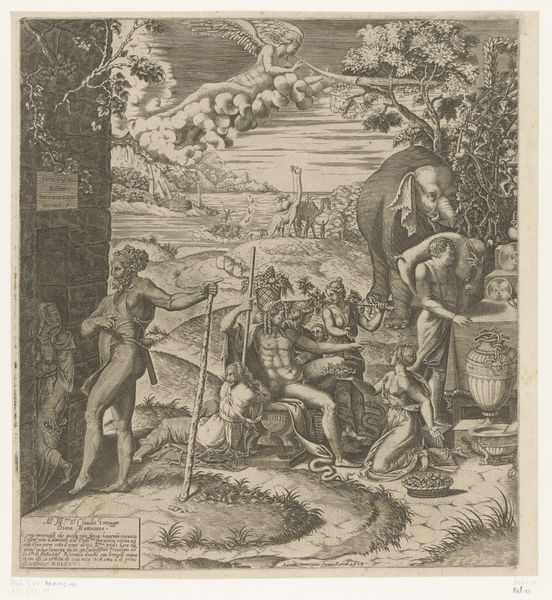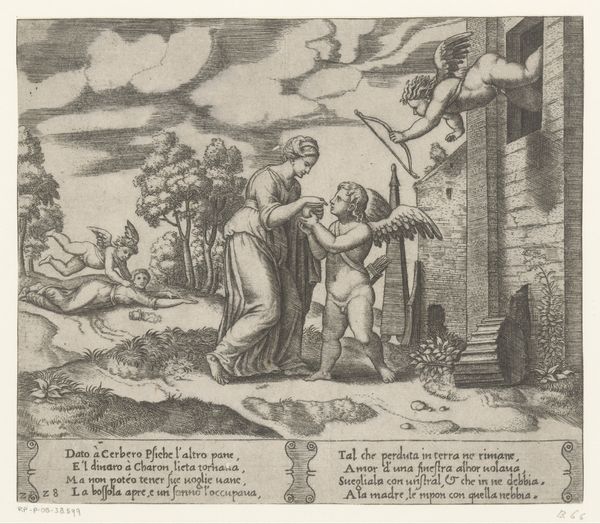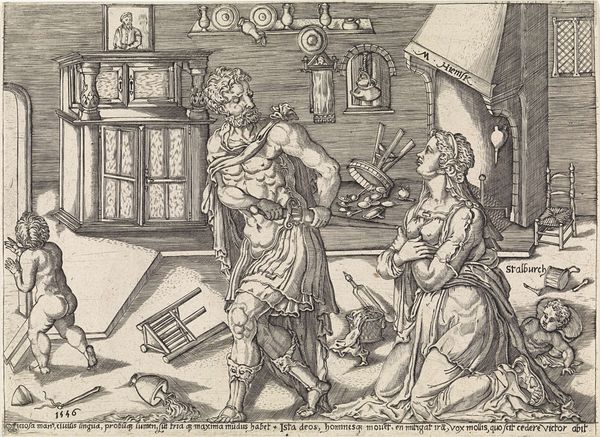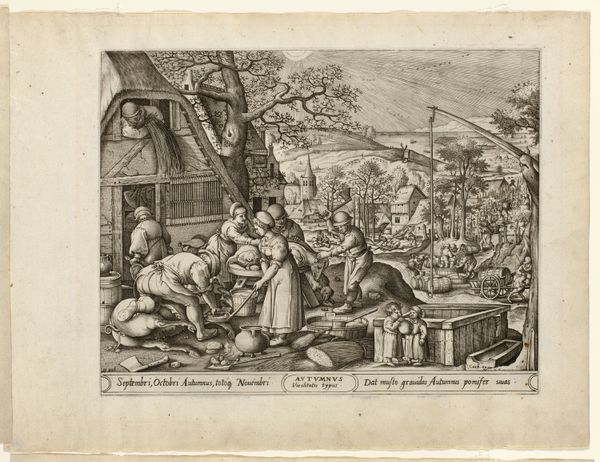
print, engraving
# print
#
landscape
#
mannerism
#
figuration
#
line
#
history-painting
#
engraving
Dimensions: 213 mm (height) x 275 mm (width) (plademaal)
Curator: This engraving from 1575 by Philips Galle after Maerten van Heemskerck is titled "The angel appearing to St. Philip." It's currently held at the SMK, the Statens Museum for Kunst. Editor: My first impression is how meticulously detailed everything is. There's an almost theatrical quality to the staging of this religious scene; I am captivated by the range of tones the engraving style creates. Curator: Galle has certainly mastered the burin. What interests me here is the relationship between Heemskerck's original design and Galle’s expert craft in rendering the scene through line engraving. Notice the labor involved in creating this complex scene with various levels of tone. It's an incredible amount of work. Editor: Agreed. Thinking about the social context, this image presents a clear power dynamic. We see Philip, the almost nude, vulnerable-looking saint, interrupted by the commanding angel in flowing robes. The racial implications of Philip’s upcoming encounter also come to mind; what narratives are at play when portraying conversions? Curator: The juxtaposition of the domestic interior—the books, the hourglass, the humble basket hanging from the rafters—against the exterior landscape emphasizes a tension between contemplation and action, almost like the saint must momentarily pause their academic practice, their careful meditation on text, for an important act of service, maybe for the process of spreading this particular ideology, or simply acting according to the higher divine order. Editor: Precisely! That’s why the angel is shown actively intervening. It also speaks to a larger theme in art of this period about religious authority and the call to service and to follow in Christ’s path and legacy in lands afar. It serves to solidify Europe’s ideological domination through religious missions. Curator: The materiality of this print as an easily reproduced image speaks to its function beyond the aesthetic, something of note as well; its efficient manufacture allowed widespread distribution and influence during a pivotal time in the reformation. Editor: By combining traditional art-historical interpretations with an understanding of socio-political elements, we get a complete view of how it serves a cultural agenda. Curator: Well, thinking about the techniques utilized gives us an enhanced insight of its complex existence. Editor: It truly demonstrates the multifaceted meanings held within a single work.
Comments
No comments
Be the first to comment and join the conversation on the ultimate creative platform.
